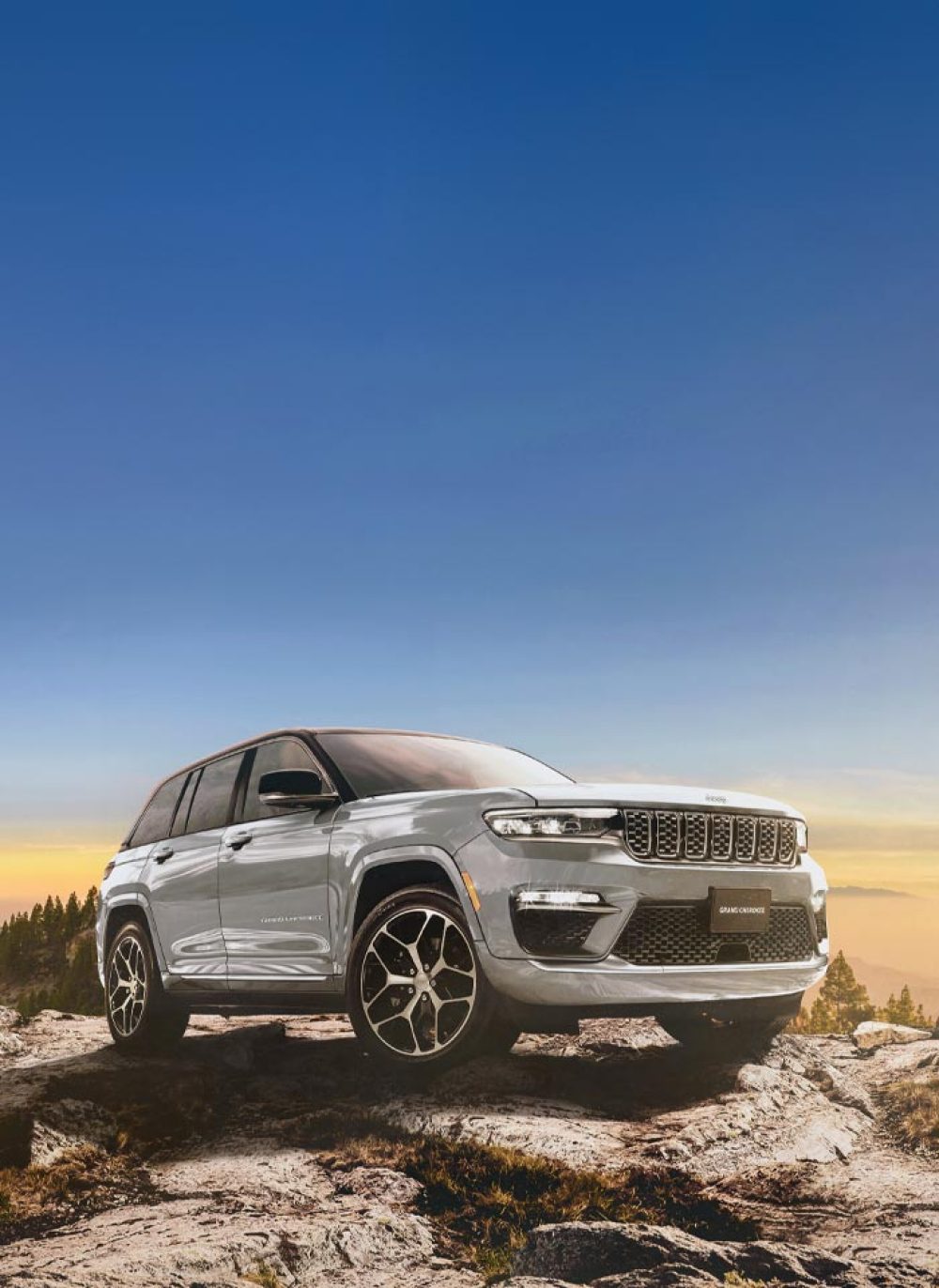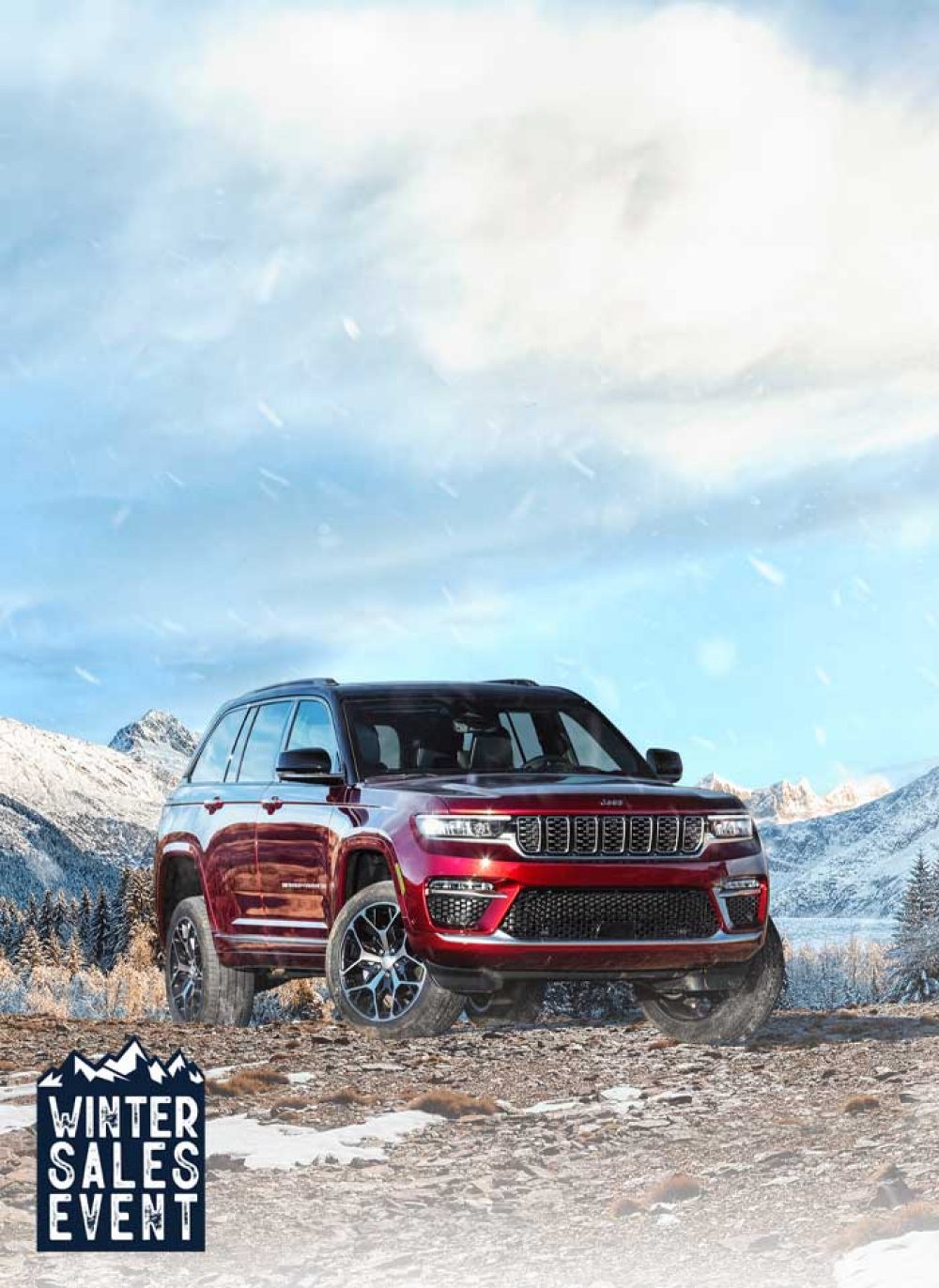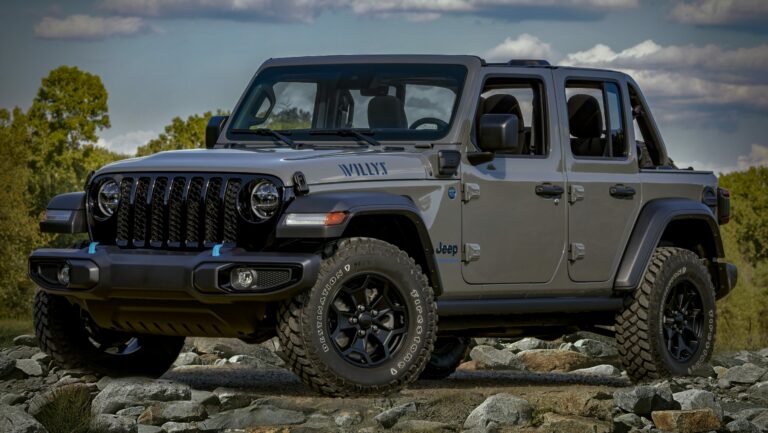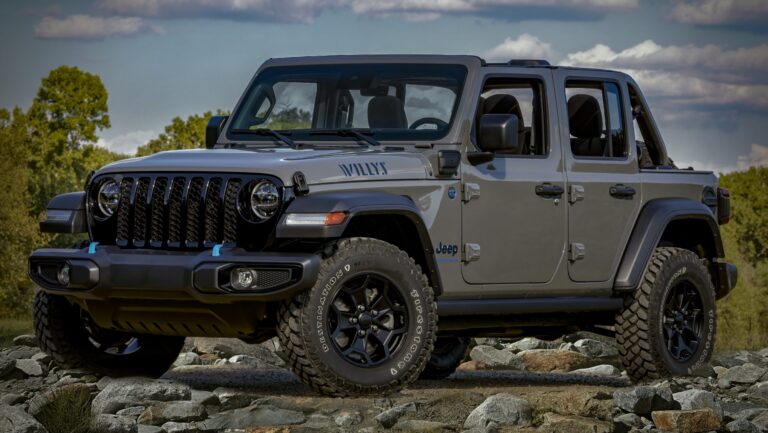Jeep Rubicon Dana 44 For Sale: Your Ultimate Buyer’s Guide
Jeep Rubicon Dana 44 For Sale: Your Ultimate Buyer’s Guide jeeps.truckstrend.com
For serious off-road enthusiasts and those who demand uncompromising capability from their 4×4, the phrase "Jeep Rubicon Dana 44 For Sale" resonates with a distinct allure. More than just a vehicle, a Jeep Rubicon equipped with Dana 44 axles represents the pinnacle of factory-built off-road prowess in the Jeep Wrangler lineup. This isn’t merely a marketing slogan; it’s a testament to a robust engineering package designed to conquer the most challenging terrains.
This comprehensive guide delves into everything you need to know when considering a Jeep Rubicon Dana 44 for sale. We’ll explore what makes these vehicles so special, critical considerations for buyers, where to find them, and practical advice to ensure you make an informed decision. Whether you’re a seasoned Jeeper looking to upgrade or a newcomer ready to dive into the world of extreme off-roading, understanding the nuances of the Rubicon Dana 44 is paramount.
Jeep Rubicon Dana 44 For Sale: Your Ultimate Buyer’s Guide
What Makes the Dana 44 So Desirable in a Jeep Rubicon?
At the heart of the Rubicon’s legendary capability lies its drivetrain, specifically the heavy-duty Dana 44 front and rear axles. While standard Jeep Wrangler models (Sport, Sahara) typically come with a Dana 30 front axle and a Dana 35 or light-duty Dana 44 rear axle, the Rubicon package elevates this significantly.
The Dana 44 axle is renowned for its strength and durability. Compared to the smaller Dana 30 and 35, the Dana 44 features:
- Larger Ring and Pinion Gears: This translates to greater strength and resistance to breakage, especially under heavy loads or when running larger tires.
- Larger Axle Shafts: Thicker and more robust, these shafts are less prone to bending or snapping when subjected to the torsional forces of challenging off-road obstacles.
- Stronger Axle Tubes: The tubes enclosing the axle shafts are thicker, providing increased rigidity and preventing deflection.

Beyond the inherent strength of the Dana 44, the Rubicon package adds crucial features that make it an off-road beast straight from the factory:
- Electronic Locking Differentials (Tru-Lok): Both the front and rear Dana 44 axles are equipped with electronic lockers. When engaged, these lockers force both wheels on an axle to spin at the same speed, providing maximum traction in slippery or uneven terrain where one wheel might otherwise lose grip. This is a game-changer for crawling over rocks or navigating deep mud.
- Lower Gearing Options: Rubicons typically come with lower factory gear ratios (e.g., 4.10:1 or 3.73:1, depending on the generation and transmission) than standard models. This lower gearing improves torque delivery to the wheels, which is essential for crawling at low speeds and handling larger tires without excessive strain on the engine and transmission.
- Electronic Sway Bar Disconnect (Active Sway Bar System): This feature allows the front sway bar to be electronically disconnected at the push of a button, dramatically increasing wheel articulation and allowing the suspension to flex more freely over obstacles, keeping all four tires on the ground for better traction.
- Heavy-Duty Suspension and Rock Rails: Rubicons also come with a more robust suspension system and steel rock rails to protect the body from damage during aggressive off-roading.

These combined features transform the Jeep Rubicon with Dana 44 axles from a capable SUV into an extreme off-road machine, capable of tackling trails that would leave other vehicles stranded.

Understanding the Different Generations: JK, JL, and JT Gladiator Rubicons
The Jeep Rubicon Dana 44 has evolved across different generations, each offering slight variations and improvements. Understanding these can help you pinpoint the right model for your needs.
- Jeep Wrangler JK Rubicon (2007-2018): This generation introduced the four-door Wrangler Unlimited and firmly cemented the Rubicon’s status. JK Rubicons came standard with front and rear Dana 44 axles, 4.10 gearing (manual transmission) or 3.73 (automatic), electronic lockers, and sway bar disconnect. They are highly sought after for their robust build and extensive aftermarket support. Early JK models (2007-2011) featured the 3.8L V6 engine, while later models (2012-2018) received the more powerful and fuel-efficient 3.6L Pentastar V6.
- Jeep Wrangler JL Rubicon (2018-Present): The JL brought significant advancements in refinement, technology, and powertrain options. While still featuring front and rear Dana 44 axles, the JL Rubicon introduced stronger axle tubes (larger diameter, thicker walls) and wider axles for increased stability. It also offers a wider array of engine choices, including the 3.6L Pentastar V6, 2.0L Turbocharged I4, and the 3.0L EcoDiesel V6 (discontinued for 2023). The JL also improved interior comfort and infotainment.
- Jeep Gladiator JT Rubicon (2020-Present): Essentially a pickup truck version of the JL Wrangler, the Gladiator JT Rubicon shares many of its off-road components, including the robust Dana 44 axles (though slightly different in design for the truck application), lockers, and sway bar disconnect. It offers the added utility of a 5-foot bed, making it ideal for overlanding or carrying gear.
Key Considerations When Buying a Used Jeep Rubicon Dana 44
Purchasing a used Rubicon Dana 44 requires careful inspection and research. These vehicles are often used as intended – off-road – so wear and tear can vary significantly.
1. The All-Important Inspection Checklist:
- Frame and Undercarriage: Look for rust, especially in colder climates where salt is used. Check for dents, scrapes, or cracks on the frame rails, differential housings, skid plates, and suspension components – these indicate hard off-road use.
- Axles and Drivetrain: Inspect the Dana 44 housings for leaks (differential covers, pinion seals). Check the U-joints on the driveshafts for play. Listen for unusual noises during a test drive, which could indicate worn gears or bearings.
- Suspension: Examine springs for sagging, shocks for leaks, and bushings for cracks or wear. Pay attention to aftermarket lift kits – are they installed correctly? Are the components high-quality?
- Steering: Check for excessive play in the steering wheel. Inspect tie rods, drag links, and ball joints for wear or damage.
- Engine and Transmission: Look for leaks. Check fluid levels and condition. Listen for any knocking, ticking, or grinding noises. Ensure the transmission shifts smoothly through all gears.
- Electronics: Test the electronic lockers and sway bar disconnect. Ensure all lights, gauges, and infotainment systems work correctly.
- Tires: Check for even wear, indicating proper alignment and suspension health. If running large aftermarket tires, ensure the gearing has been adjusted accordingly.
2. Understanding Modifications:
Many Rubicons are modified. Modifications can add value or cause problems.
- Quality Over Quantity: High-quality components (e.g., reputable lift kits, heavy-duty steering components) installed professionally are a plus. Cheap parts or shoddy workmanship can lead to headaches and safety issues.
- Purpose of Mods: Was it built for rock crawling (low gearing, big tires, heavy armor) or general trail riding? Ensure the modifications align with your intended use.
- Re-gearing: If larger tires (35-inch or more) are installed, ensure the axles have been re-geared to match. If not, performance and fuel economy will suffer, and drivetrain components will wear prematurely.
- Documentation: Ask for receipts or documentation for significant modifications.
3. Maintenance History and Usage:
- Service Records: A well-documented maintenance history is invaluable. Look for regular oil changes, differential fluid services, and preventative maintenance.
- Off-Road History: Don’t be afraid of a Rubicon that has been off-roaded, but understand that this usage means more potential wear and tear. A "mall crawler" might look pristine but hasn’t been tested. A well-maintained trail rig, however, could be a gem.
Where to Find Jeep Rubicon Dana 44 For Sale
Finding the right Rubicon requires patience and knowing where to look.
- Online Marketplaces:
- AutoTrader, Cars.com, CarGurus: Broad search platforms that list vehicles from dealerships and private sellers.
- Craigslist & Facebook Marketplace: Excellent for finding private sellers and potentially better deals, but require more caution and due diligence.
- eBay Motors: Good for finding unique builds or specific parts, but be wary of "as-is" sales.
- Specialized Jeep Forums & Social Media Groups: Many dedicated Jeep forums (e.g., JLWranglerForums, JK-Forum, Wayalife) and Facebook groups have "for sale" sections. These often feature detailed listings from enthusiasts who know their vehicles.
- Dealerships: Both new and used car dealerships will have Rubicons. Certified Pre-Owned (CPO) options offer peace of mind with warranties, but come at a premium.
- Off-Road Shops: Some specialized off-road shops buy, build, and sell used Jeeps. They often have knowledge of the vehicle’s history and modifications.
- Auctions: Government or public auctions can sometimes yield deals, but they typically come with a higher risk as you often can’t thoroughly inspect the vehicle beforehand.
The Buying Process: Tips for a Smooth Transaction
Once you’ve found a potential candidate, follow these steps for a successful purchase:
- Research Fair Market Value: Use resources like Kelley Blue Book (KBB), NADA Guides, and recent sales data from online marketplaces to determine a fair price based on year, mileage, condition, and modifications.
- Pre-Purchase Inspection (PPI): This is non-negotiable for a used Rubicon. Have an independent mechanic, ideally one specializing in Jeeps or 4x4s, thoroughly inspect the vehicle. They can spot issues you might miss.
- Test Drive Thoroughly:
- Drive on varied terrain: highway, city streets, and if possible, some mild off-road conditions (with seller’s permission).
- Test all 4WD modes (2H, 4H, 4L).
- Engage lockers and sway bar disconnect (if safe and appropriate).
- Listen for unusual noises, feel for vibrations, and check steering and braking response.
- Negotiation: Be prepared to negotiate. Use any inspection findings as leverage. Don’t be afraid to walk away if the price isn’t right or if significant issues are uncovered.
- Check Title and History: Ensure the title is clean and matches the VIN. Run a CarFax or AutoCheck report to check for accidents, salvage titles, flood damage, or lien holders.
Potential Challenges and Solutions
- High Demand and Prices: Rubicon Dana 44s hold their value exceptionally well due to their capability.
- Solution: Be patient, expand your search radius, and be ready to act quickly when a good deal appears.
- Identifying "True" Off-Road Use vs. "Mall Crawler": It can be hard to tell how hard a Jeep has been driven off-road.
- Solution: A thorough PPI and detailed questions to the seller about their usage habits are key. Look for subtle signs like scratches on skid plates, scuffed wheels, or worn interior components.
- Post-Purchase Maintenance: Even a well-maintained Rubicon will require ongoing care, especially if you plan to use it off-road.
- Solution: Budget for regular fluid changes (engine, transmission, transfer case, differentials), inspections, and potential repairs. Join local Jeep clubs for advice and camaraderie.
- Finding Specific Configurations: You might want a specific color, transmission, or engine.
- Solution: Use online filters extensively and be prepared to wait for the right vehicle to surface.
Estimated Price Guide for Jeep Rubicon Dana 44 For Sale
Please note that these are estimated price ranges in USD and can vary significantly based on location, mileage, condition, specific modifications, and current market demand. This table is for general guidance only.
| Model Generation | Model Years | Condition (General) | Estimated Price Range (USD) | Key Features/Notes |
|---|---|---|---|---|
| JK Rubicon | 2007-2011 | Good (Stock/Light Mod) | $15,000 – $25,000 | 3.8L V6, early generation, robust |
| 2007-2011 | Heavily Modified | $20,000 – $35,000+ | Price highly dependent on quality of mods | |
| 2012-2018 | Good (Stock/Light Mod) | $22,000 – $38,000 | 3.6L Pentastar V6, more power, popular | |
| 2012-2018 | Heavily Modified | $28,000 – $45,000+ | Strong aftermarket, widely available | |
| JL Rubicon | 2018-2020 | Good (Stock/Light Mod) | $35,000 – $50,000 | Early JLs, modern tech, wider axles |
| 2021-Present | Good (Stock/Light Mod) | $45,000 – $65,000+ | Newer models, potentially higher trim/engine options | |
| All JL | Heavily Modified | $40,000 – $70,000+ | High-end builds can exceed $80k | |
| JT Gladiator Rubicon | 2020-Present | Good (Stock/Light Mod) | $40,000 – $60,000 | Truck utility, same JL features, high demand |
| All JT | Heavily Modified | $50,000 – $75,000+ | Overlanding builds, unique modifications |
Frequently Asked Questions (FAQ) about Jeep Rubicon Dana 44 For Sale
Q1: What’s the main difference between a Jeep Sport/Sahara and a Rubicon?
A1: The primary difference lies in their off-road capability. The Rubicon comes standard with heavy-duty front and rear Dana 44 axles, electronic locking differentials, an electronic sway bar disconnect, lower transfer case gearing (4:1 Rock-Trac), and often more aggressive tire options and rock rails. Sport and Sahara models typically have lighter-duty Dana 30/35 axles and lack these specialized off-road features.
Q2: Can I add Dana 44 axles to my non-Rubicon Jeep?
A2: Yes, it’s possible but can be costly and complex. You can purchase aftermarket Dana 44 (or stronger) axles, but you’ll also need to consider adding lockers, upgrading the transfer case (for the lower gearing), and potentially modifying suspension and wiring for the electronic features. Often, buying a Rubicon outright is more cost-effective if you desire all its factory capabilities.
Q3: Are Rubicon Dana 44 axles indestructible?
A3: No axle is truly indestructible, especially under extreme conditions or with very large tires. While the Dana 44 is significantly stronger than its lighter-duty counterparts, hard off-roading, incorrect tire pressure, or poor driving techniques can still lead to bent axle tubes, broken axle shafts, or damaged differential components. Regular maintenance and responsible driving are key.
Q4: What’s the "best" year for a Rubicon Dana 44?
A4: The "best" year depends on your priorities. JK Rubicons (2012-2018 with the 3.6L engine) offer a great balance of capability, aftermarket support, and value. JL Rubicons (2018-present) provide more modern technology, comfort, and stronger factory axles. Your budget, desired features, and intended use will dictate the best choice for you.
Q5: How much should I budget for post-purchase maintenance and potential upgrades?
A5: Always budget extra. For a used Rubicon, setting aside 10-15% of the purchase price for immediate maintenance (fluids, filters, basic tune-up) and unexpected repairs is wise. If you plan to heavily modify it, your budget will increase significantly depending on the parts and labor involved.
Q6: Is it worth buying a Rubicon Dana 44 with high mileage?
A6: High mileage isn’t necessarily a deal-breaker, especially if the vehicle has a documented service history and passes a thorough pre-purchase inspection. Jeeps, particularly the Rubicon, are built to be robust. However, higher mileage may mean more wear on components like ball joints, wheel bearings, and suspension parts, which could lead to more immediate maintenance needs.
Conclusion
The pursuit of a "Jeep Rubicon Dana 44 For Sale" is more than just a search for a vehicle; it’s an investment in a lifestyle defined by adventure, capability, and community. The robust Dana 44 axles, coupled with the Rubicon’s specialized off-road features, make these Jeeps exceptionally capable right off the showroom floor, or even more so with tasteful modifications.
By understanding the unique strengths of the Dana 44, knowing what to look for in different generations, performing diligent inspections, and following a smart buying process, you can confidently navigate the market. While prices can be high and competition stiff, the reward of owning a vehicle that can truly take you almost anywhere is immeasurable. With the right research and a bit of patience, you’ll soon be joining the ranks of proud Rubicon owners, ready to conquer the trails less traveled. Happy Jeeping!




